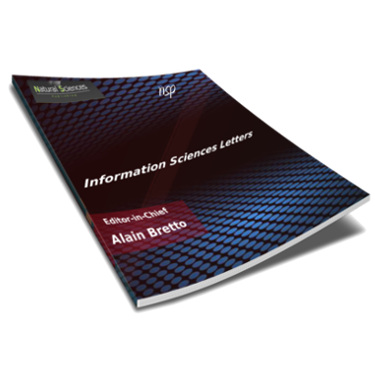
Information Sciences Letters
Abstract
Deep learning recently unveiled the most well-known methods for picture recognition. The most common method used for identification is human verification based on biometric samples. The prohibitive cost of creating, training, and using such models for the expansion of computer vision applications is the key barrier in such fields. To solve this issue, transfer learning provides flexible solutions to model the appropriate Convolutional Neural network (CNN) quickly and efficiently. In such a framework a previously trained CNN on a large dataset with a high number of classes is adapted to the at-hand taxonomizing problem. Iris is one of the most challenging biometric samples due to its nature besides having dual samples per person, meaning that a right and left iris samples. The transfer learning framework presented in this article relays on three well-known CNN models to model an iris based human recognition model. The selected MMU iris image database is analyzed and investigated using the most famous CNN models, which are Inception V3, Xceptions and InceptionResNetV2. The findings showed that the proposed framework is robust and reliable for the purpose of iris based human recognition with a high performance in the test stage, what proves our hypothesis applying proposed transfer learning framework. Keywords: Recognition; Transfer; Learning; MMU database; Inception V3, Xception, InceptionResNetV2, Evaluation Measures.Deep learning recently unveiled the most well-known methods for picture recognition. The most common method used for identification is human verification based on biometric samples. The prohibitive cost of creating, training, and using such models for the expansion of computer vision applications is the key barrier in such fields. To solve this issue, transfer learning provides flexible solutions to model the appropriate Convolutional Neural network (CNN) quickly and efficiently. In such a framework a previously trained CNN on a large dataset with a high number of classes is adapted to the at-hand taxonomizing problem. Iris is one of the most challenging biometric samples due to its nature besides having dual samples per person, meaning that a right and left iris samples. The transfer learning framework presented in this article relays on three well-known CNN models to model an iris based human recognition model. The selected MMU iris image database is analyzed and investigated using the most famous CNN models, which are Inception V3, Xceptions and InceptionResNetV2. The findings showed that the proposed framework is robust and reliable for the purpose of iris based human recognition with a high performance in the test stage, what proves our hypothesis applying proposed transfer learning framework.
Recommended Citation
Abu-Zanona, Marwan
(2023)
"Identifying Humans Based on Biometric Iris Recognition using an Interactive Transfer Learning Framework,"
Information Sciences Letters: Vol. 12
:
Iss.
3
, PP -.
Available at:
https://digitalcommons.aaru.edu.jo/isl/vol12/iss3/3

